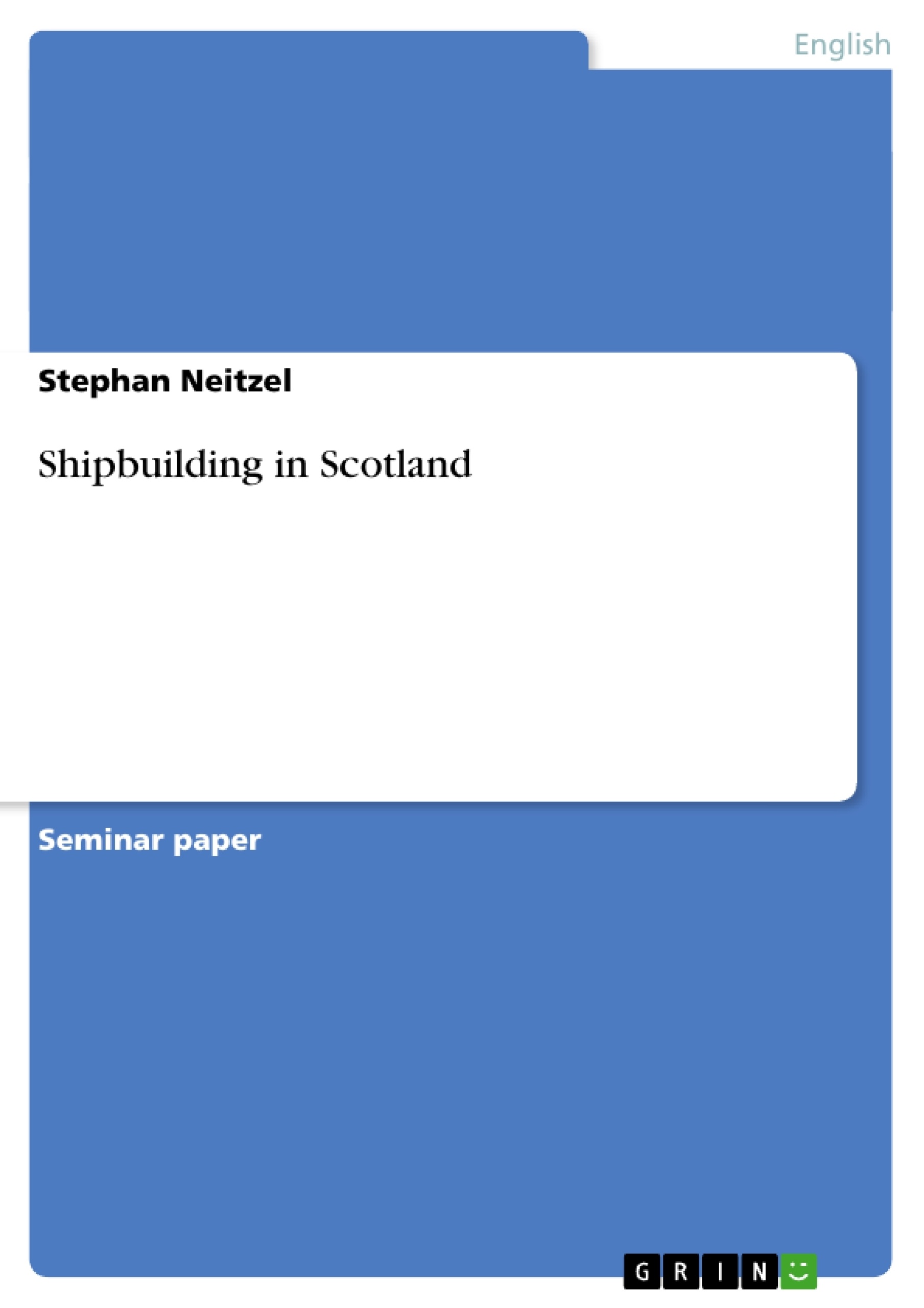Few years ago, in 1995, I had the chance to attend the world famous “Cutty Sark Tall-Ship Races”. The regatta took us from Edinburgh in Scotland to Bremerhaven in Germany. We were sailing for nearly three days until we reached the finish in Bremerhaven. Although we had not so much good look with the wind conditions in the North Sea we, the crew and the trainees of the “Great Duchess Elizabeth” from Elsfleth in Germany, reached the 2nd place which was really good and everyone of us was really proud because famous sailing-ships like for example the “Alexander of Humboldt” known from “Beck’s” – advertisements on TV also attended this regatta. The fact that this was the first time I attended a sailing regatta and the really tall sailing-ship where I was on board, it was about 65 metres long, impressed me so much I will never forget this.
And now, as I was searching for a topic and material for my paper in cultural studies I found out that Scotland is famous for his ship-building industry. There was no doubt about writing this paper about ship-building in Scotland for me because of my memories of that great regatta.
What I want to do is to show the development of the ship-building industry in Scotland during the 20th century. I will direct my attention on the shipyards situated on the river Clyde, which is one of the most important rivers in Scotland. The river is situated in the west of Scotland and is very important for the industry of the town of Glasgow because it flows into the Atlantic Ocean and offers quite good conditions for yards. Therefore, it can be used for exports and imports by merchant ships. I will make clear if the ship-building industry situated there suffered under the economic decline as many other industries in Scotland did. I also would like to point out what reasons there have been that caused the decline of ship-building on the Clyde. Finally, I will give some industry solutions for solving the problems of the shipyards on the Clyde.
Inhaltsverzeichnis (Table of Contents)
- Preface
- The Development of Ship-Building in Scotland in the First Half of the 20th Century
- The Circumstances at the Beginning of the 20th Century until the First World War
- The Consequences of the First World War for the Scottish Ship-Building Industry up to the 1940s
- The Decline of Ship-Building in Scotland after the 1940s
- The Decline of Ship-Building in Scotland After the 1940s Till the Present
- What Were the Reasons for the Decline of Ship-Building in Scotland after the 1940s?
- What Solutions Were Offered to Stop the Decline of Ship-Building?
- Conclusion
Zielsetzung und Themenschwerpunkte (Objectives and Key Themes)
This paper aims to analyze the development of the shipbuilding industry in Scotland throughout the 20th century. It specifically focuses on the shipyards located on the River Clyde and explores the reasons behind the industry's decline. The paper concludes by examining solutions offered to address the challenges faced by the shipyards.
- The rise and prominence of the shipbuilding industry in Scotland in the early 20th century
- The impact of World War I and the subsequent economic depression on the shipbuilding industry
- The factors contributing to the decline of shipbuilding in Scotland after the 1940s
- Proposed solutions to address the decline of the shipbuilding industry on the Clyde
- The historical context of the shipbuilding industry in Scotland within the broader industrial landscape of the nation
Zusammenfassung der Kapitel (Chapter Summaries)
- The Preface provides the author's personal connection to shipbuilding, inspired by his experience participating in the Cutty Sark Tall-Ship Races. It outlines the paper's focus on the development of shipbuilding in Scotland during the 20th century, specifically focusing on the River Clyde and its shipyards.
- Chapter 2.1 explores the flourishing shipbuilding industry in Scotland at the beginning of the 20th century, highlighting its role in the growth of heavy industry in the central Lowland valley. The chapter discusses the evolution from sailing ships to steamships and the impact of technological advancements on the industry.
- Chapter 2.2 analyzes the consequences of World War I on the Scottish shipbuilding industry. Despite disruptions caused by the war, the industry experienced a boom in the immediate aftermath due to the need for new ships to replace those lost during the conflict. However, the global economic depression of the 1930s significantly impacted the industry, leading to a decline in production and overall output.
Schlüsselwörter (Keywords)
This paper delves into the history of shipbuilding in Scotland, exploring its development in the 20th century, the industry's decline after the 1940s, and proposed solutions for revitalizing the shipbuilding sector on the River Clyde. Key themes include industrial growth, economic impacts, technological advancements, and the role of shipbuilding in Scotland's overall industrial landscape.
- Arbeit zitieren
- Stephan Neitzel (Autor:in), 2003, Shipbuilding in Scotland, München, GRIN Verlag, https://www.hausarbeiten.de/document/43049


